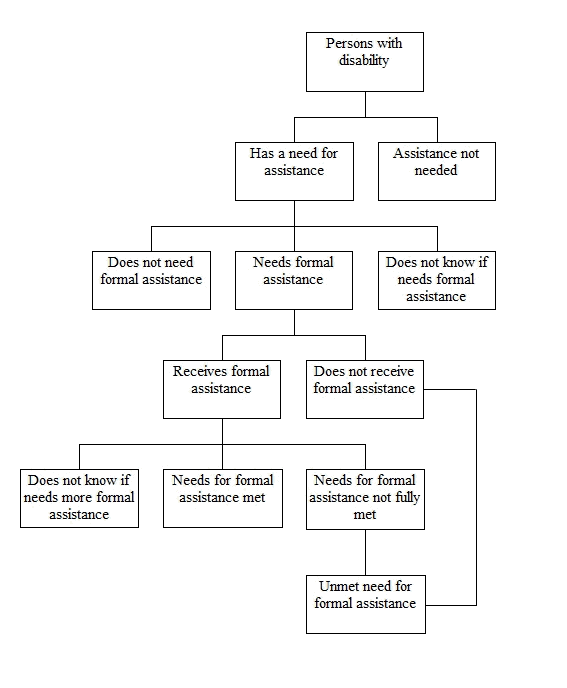KEY FINDINGS
IDENTIFYING NEED FOR ASSISTANCE
This publication presents information from the 2012 Survey of Disability, Ageing and Carers (SDAC). The SDAC is designed to measure the prevalence of disability in Australia, as well as inform around the socio-economic characteristics and the need for support by people with disability.
The SDAC asked a series of questions about Australians needing assistance because of disability. The questions about need for assistance related to:
- Whether or not the person needed assistance with one or more of ten specific activities (including the core activities of self-care, mobility and communication)
- The degree to which this assistance was needed, and whether they needed help from a formal or informal provider
- Who provided help (including whether the assistance came from a formal or informal provider), and
- Whether or not the person's need for assistance was met.
This publication presents information about people with disability who were identified as having an unmet need for formal assistance.
WHAT IS UNMET NEED FOR FORMAL ASSISTANCE?
In the 2012 SDAC, unmet need for formal assistance refers to people with disability who reported a need for formal assistance and:
- Received some formal assistance for that need but not enough, or
- Received no formal assistance for that need.
People may have had more than one unmet need for assistance for different activities.
KEY RESULTS
In 2012 there were an estimated 1.5 million people with disability who needed formal assistance from an organised service provider for at least one activity of everyday living. Around half (50.7% or 774,000 people) had an unmet need for formal assistance.
Results from the 2012 SDAC found that there were some groups who were more at risk of having an unmet need for formal assistance. In particular:
- Around two-thirds of young males aged 0-14 years (63.6%) and 15-24 years (66.7%) who required formal assistance had an unmet need for formal assistance.
- Boys aged 0-14 years made up 19.5% of all males with an unmet need for formal assistance. In contrast, girls aged 0-14 years made up just 6.4% of all females with an unmet need for formal assistance.
- Around two-thirds of people who needed formal assistance who had Autism and related disorders (66.7%), Attention deficit disorder/hyperactivity (62.2%) or other developmental disorders (69.4%) had an unmet need for formal assistance.
- Higher rates of unmet need were found amongst those with intellectual (61.4%) and psychological (59.4%) disabilities, than those with physical (51.1%) and sensory and speech (50.2%) disabilities.
- People with an unmet need for formal assistance were less likely to be participating in the labour force (35.8%) compared with those whose needs were met (42.0%), and more likely to be living in low income households (53.5% compared with 48.3%, respectively).
CONCEPTUAL FRAMEWORK
The conceptual framework for Unmet need for formal assistance is summarised in Figure 1. It illustrates how those with an unmet need for formal assistance are identified, by combining those that need formal assistance but receive none with those who receive formal assistance, but don't have their needs fully met.
Figure 1: Unmet need for formal assistance conceptual framework

 Print Page
Print Page
 Print All
Print All